Amish History: Anabaptists in Salm (Alsace)
Reader Romain Speisser has shared a guest post today on the history of the Amish in his region of Alsace in France. Romain writes about the “Heftler” people and some of the significant figures of the area – as well as one important oak tree over two centuries old. I share with you Romain’s post below, along with some photos, all taken by Romain.
For some additional information, Amish historian David Luthy writes about Amish origins, discussing both the Amish and their spiritual forebears the Swiss Brethren, including a mention of Salm.
The Hamlet of Salm
It is in the hamlet of Salm that there were emblematic figures of the Anabaptist movement. In Salm, as in most of Alsace, it was Jacob Amann’s rigorous ideas that dominated. Like many lords, the princes of Salm welcomed on their lands the Anabaptists, known for their hard work and their honesty.
Our Amish in Alsace were later known as “Heftler” in reference to the staples they wore instead of buttons. In addition, Mennonite churches in Holland kept an eye on these rustic and closed-looking “brothers” by sending observers to report on their actions. Today, there are still farms in the Glade of Salm, formerly owned by Heftler families, and a cemetery.
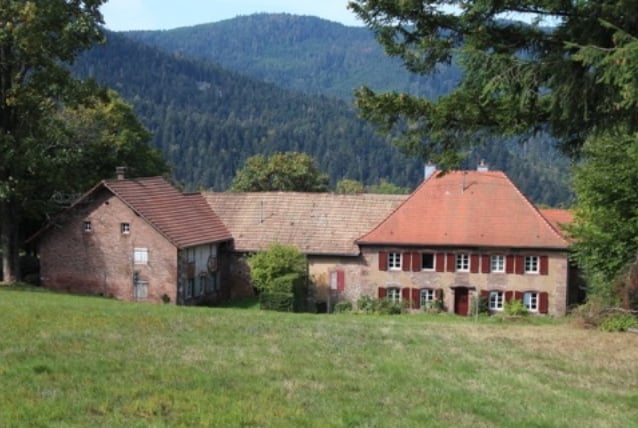
Salm farm (All photos by Romain Speisser)
The largest of these houses was inhabited by the Minister and Elder Jacob Kupferschmitt, born around 1723. Before 1792 and since civil status was not compulsory, the Heftlers were very difficult to trace because the registers were kept only by Catholic priests and Lutheran pastors. Our local Amish also tried to evade these acts as much as possible, just to leave no trace.
In 1793, Jacob greatly contributed to the fact that the Heftlers were not engaged in armed service by the French government in place, but once Napoleon came to power, this privilege was taken away from them.

The cemetery of Salm and some of its Amish tombs. The graves are marked with a heart. The first lower right is that of Jacob Kupferschmitt. The two tombs behind in white sandstone are those of Nicolas and Madeleine Augsburger.
One family, the Augsburgers, were very prolific in offspring and this name is found in generation after generation. Part of the Augsburger family left Alsace to settle in Ohio at Milford Township, then at Madison Township, where they were involved in the leadership of the Amish of this state.

Peterschmitt/Gerber/Augsburger farm seen from the road
Let’s look at Nicolas Augsburger, who moved to the Salm. He too became Minister and Elder in this part of Alsace. He reigned there as a patriarch recognized and respected. His great knowledge of medicinal plants and his success in business made him known in all the surrounding areas.
In 1860, an author by the name of Alfred Michiels put Nicolas first in one of his books “Les anabaptistes des Vosges” where he retraced the meetings he had with the patriarch. Michiels detailed the way of life and the beliefs of the Alsatian Amish. This book can be read online, but only in French, at gallica.bnf.fr.

Peterschmitt/Gerber/Augsburger farm, rear view
Following a bad fall on the stairs of his cellar, Nicolas died in 1890. The national press mentioned the death of Nicolas, and a large number of people – even non-Anabaptist – attended his burial, as his qualities were recognized.

Nicolas Augsburger’s grave
Salm became a very high place of Anabaptism in Alsace. Being from this family and owner of the large Salm Farm, automatically meant being the patriarch of the country. Most of the services during worship once every two weeks or once a month took place in this house for the local Anabaptist inhabitants.
An oak was planted in 1793 to commemorate exemption from national service. This oak is still standing today, and is more than two hundred years old.

Acorns from this oak were recovered from under the tree and taken to Eastern Mennonite University in Harrisonburg, Virginia, and the Amish and Mennonite Heritage Center in Berlin, Ohio, where descendants of the tree that Jacob Kupferschmitt planted are now growing.



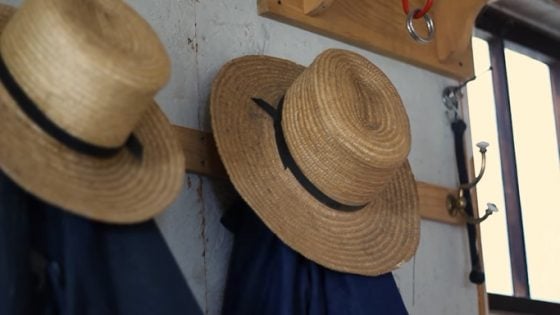

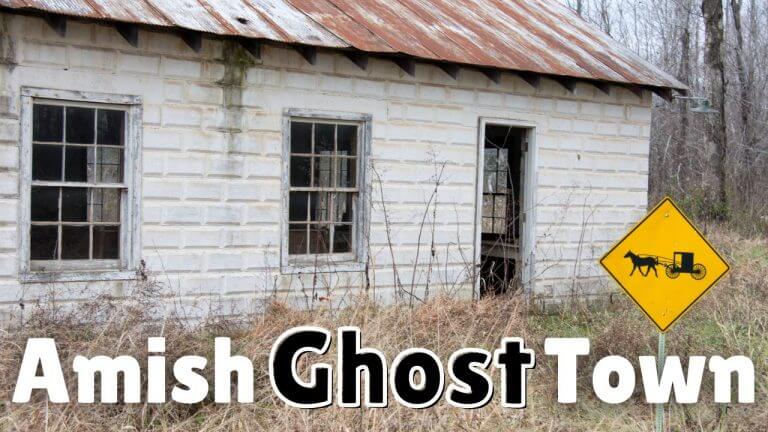
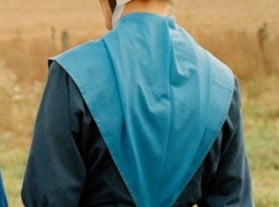
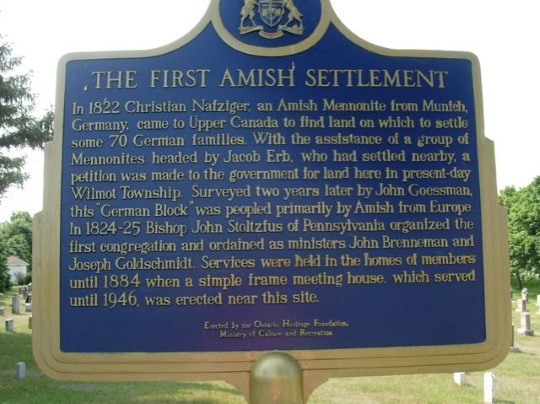
ALSACE Region
THANK YOU for sharing! SO VERY interesting…I am going to have to look at a map now!
We traveled around France, Switzerland and neighboring countries, about 15 yrs. ago. One place of interest was a castle in Switzerland where we had a private tour, where Amish/Mennonites had been imprisoned and persecuted. We learned a lot, and it was very enjoyable to learn some of the history of my ancestors who came across on the “Charming Nancy” in the 1700’s., purchased land and settled in “Penn’s Woods”.
There are a number of books written, and some I found of interest were well researched and written by Suzanne Woods Fisher, a series of books about the European Amish immigrants who came to America. The first one is named “Anna’s Crosssing”.
After that, I discovered a series written by Ervin R. Stutzman,the story of one Amish immigrant family; one of the first settlers, who were ambushed, killed and/or kidnapped … “Jacob’s Choice” is the first one, in his series.
P.S. It was interesting also that our friends in France, pronounced “Alsace”, as “AL-Sauce”.
We were then able to visit that site in Shartlesville, PA., a number of years later!
CJ glad you liked this post and thanks for Romain for the work on it. You mentioned a couple of authors that we’ve had on the site before contributing some nice posts you might enjoy. Suzanne has done a couple on historical/cultural themes:
https://amishamerica.com/suzanne-woods-fisher-story-of-the-red-mutza/
https://amishamerica.com/amish-dress-code/
And we had an interview with Ervin Stutzman on Jacob’s Choice:
https://amishamerica.com/ervin-stutzman-jacobs-choice/
Surnames of Alsace
My ancestors (Swonger) are from Alsace. My father was Christened in a Brethren Church in rural Indiana in 1914. Is there a list of Alsatian Surnames available from a reliable source? Please advise and thanks for the information.
One Alsatian surname
My Sister married into a FRY family descended from a Jacob FREY who immigrated from Alsace, France to Tiffin Ohio about 1820 with a wife and 3 children. Apparently they were Catholic as Jacob was reputed to be a devout Catholic. How FREY became FRY by family legend was that (as occasionally happened), an immigration officer mis-spelled the name FREY on family documents as FRY. Jacob supposedly said if FRY is American spelling, then he was FRY because he was committed to be American. Records show not all his children used the FRY spelling but went by FREY as adults. As a result Jacob FREY has descendants named both FREY and FRY. I discovered the FRYs who are my in-laws had no clue they are related to at least some, perhaps all, the FREYs living around them in northwest Ohio.
Cousins?
I wonder if your Jacob Frey/Fry are descendants of my earliest Frey ancestor also from Alsacre.
They were listed in the Morovian List of Brethernin Heidkeberg, Oct 1752. Johan Peter Frey married Anna Barbara Schmidt and they had 12 children. It is believed that 3 of their children remained in Germany. They arrived in America on Aug17,1733 with other Freys, most likely brothers and cousins. They were originally listed as Lutheran but later became associated with the Moravians after they arrived in the US.
Alsatian surnams
In this part of Alsace, the surnames most often encountered in addition to those mentioned in the text are: Neuhauser, Schlabach, Gerber, Schantz, Sommer, Wagler (Berce), Dellenbach, Cherich, Hung, Beller, Bacher , …
But in other areas of Alsace, we also find Bachmann, Kennel, Joder, Jordy, Steiner, Hirschler, Eicher, Risser, Eyer, Esch, Raber, Jantzi, Ramseyer, Rupp, Nussbaumer, Zehr, Nafziger, Peterschmitt, Hege,… With very different spellings according to the people who registered the names and the names which were anglicized once in America.
Here is a French site with some Anabaptist names from Alsace. https://fr.geneawiki.com/index.php/Généealogy_Anabaptiste#Quelques_noms_connus
familiar names
Many,even most, of those family names are common among English people around northwest Ohio.
Familiar names
Indeed, some names can be found in non-Anabaptists. Several explanations …
Before the reform, the whole of the old continent was Catholic, some families remained Catholic, others became Protestant at the time of the reform, depending on the religion of the lord of the place on which they depended. (The population had to take the religion of the lord where they lived). The Anabaptist current was a separate current, unrecognized by the authorities. In the same family, some remained under the religion of the Lord others made the “rebels” and already there are for example Catholic Muller (Miller) and Anabaptist Muller, Protestant Frey and Anabaptist Frey, …
Jacob Amann also made his split because among other things, some Mennonites, took the wrong path of attending Lutheran worship, which gave rise to mixed marriages for the benefit of Lutheranism. Even if the Heftler (Amish) movement demanded endogamy, we see here in Europe that from 1840/1850, mixed marriages had taken place, for the benefit of the other religion and not of Anabaptism.
And let’s be honest, the flight to America was not only to avoid compulsory military service, some young people crossed the Atlantic to avoid Amish religious rigor to make a new, freer life and by arriving in America, they took another religion not just Mennonite. I have simplified the reasons, but other factors come into play, we could make a thesis. But that is why we find family names in the various religious currents.
Many thanks
Thank you so much Romain.
I’ve always been very interested in genealogy of my ancestors as well as those of the Amish. Though Frey is a known Amish name, I dont believe my ancestors were ever Amish, or if they were it was unknown, although my grandmother often made the same dishes as some of the Amish and her family was always referred to as PA Dutch.
I really enjoyed your post and especially the pictures. Thanks again and be well.